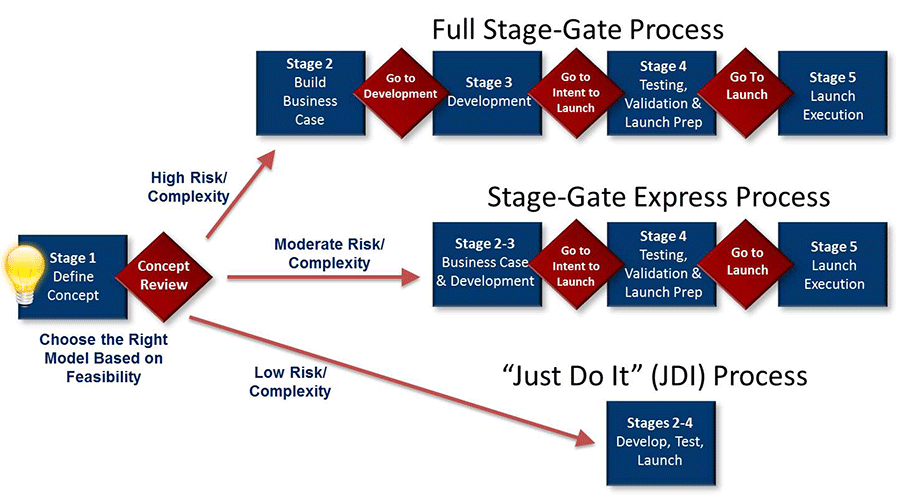Why Building Integrity Matters for Australian Home Owners
Building a home is one of the biggest investments most Australians will make, and the process can feel both exciting and overwhelming. But beyond choosing tiles and layouts, the real key to success lies in something much deeper—building integrity. Integrity in construction isn’t just about avoiding shortcuts; it’s about ensuring that every part of your home is built to last, delivering quality without surprises.
In Australia’s residential construction sector, balancing time, cost, and quality can be a tricky game. Focus too much on one—like cutting costs—and you risk sacrificing quality or causing delays. Rushing a build can lead to defects that become costly down the track. On the other hand, prioritising perfection can send budgets sky-high. This delicate juggling act is what is refered to as the "holy trinity" of construction: time, cost, and quality.
Unfortunately, it’s not uncommon to hear stories of building projects going over budget, running late, or ending in poor workmanship. Recent industry scandals, like Sydney’s Opal Tower evacuations, have made it clear that trust and quality management are essential to avoid the stress that comes with these problems.
This post breaks down how you, as a home owner or soon-to-be home owner, can navigate the building process confidently. With the right knowledge, the right team, and an eye on the "holy trinity," you can make sure your dream home becomes a reality—without nasty surprises along the way.
Let’s look into what makes building integrity so essential, how to manage time and budgets, and how to ensure your home is built to the high standards you deserve.
Connecting with the Constructing Building Integrity Report
This blog post draws directly from insights in the recently released Constructing Building Integrity report (read and download it above), which highlights the challenges in Australia’s residential construction sector and offers five key recommendations for improving quality and restoring public trust. Although this report was focussed on Apartment Dwellings, the same easily applies of residential house dwellings.
The Constructing Building Integrity report makes five key recommendations:
- Create an Apartment Industry Development Agency (AIDA) to improve procurement practices and standard contracts.
Note: Don't confuse this AIDA with the marketing version. AIDA (marketing) stands for Attention, Interest, Desire, and Action. It is a marketing and communication model used to guide the creation of content, advertisements, and messaging that encourages consumer engagement and conversion.
- Establish national Centres of Excellence to develop prototypes, raise standards, and encourage collaboration.
- Raise education, accreditation, and training standards across construction professions.
- Enhance regulatory frameworks to strengthen accountability and enforce professional standards.
- Support professional associations’ ethical frameworks to promote co-regulation and higher standards.
The report emphasises ethical standards, professional accountability, and better governance, all of which align with the strategies discussed in this post.
By focusing on balancing time, cost, and quality, we aim to give you practical steps inspired by the report’s findings, helping you navigate construction with confidence and achieve lasting results.

Our Position on the Report’s Oversight Gap
While the Constructing Building Integrity report offers valuable recommendations around regulation, accreditation, and education, we believe it overlooks a critical component: oversight and compliance.
Educating professionals is essential, but without robust oversight to enforce these standards, the risk of cutting corners persists.
Site staff need to know that their work will be checked and held accountable, with consequences for non-compliance. Without the fear of repercussions, cost and time take precedence over quality.
The report’s 50 interviews, distributed across 12 professions (roughly four per profession), suggest limited input from site-level staff (supervisors & front line managers who report to construction managers), further highlighting the need to focus on practical enforcement and administration of standards in the real-world construction environment.
We detailed our position on the mechanism for oversight we believe should be implemented in one of our recent blog posts which you can read by clicking the link below:

Discussion and proposed solutions to fix the quality issues of residential construction

Understanding the "Holy Trinity": Time, Cost, and Quality in Residential Construction
When it comes to building a home, time, cost, and quality are the three pillars that every project revolves around. Think of them as a triangle—changing one side will always impact the others (see below).
For example, speeding up construction (saving time) might mean paying more for extra labour or risking a dip in quality. Similarly, choosing premium materials (quality) can push costs higher and extend timelines. It’s all about balance, and getting this balance right is key to avoiding frustration later.

The Trade-Offs You’ll Encounter
You may face tough decisions, like whether to:
- Save time by using prefabricated elements but sacrifice some design flexibility.
- Cut costs by using standard materials, knowing this might reduce long-term durability.
- Prioritise quality by hiring top-tier contractors but need to budget extra time to get things just right.
Each project is unique, and finding the sweet spot between these three factors requires realistic expectations, good communication with your builder, and a solid plan.
Avoiding Issues: Setting the Right Priorities
It’s easy to be lured by promises of a fast, cheap build, but compromises can lead to defects or delays. The goal is to prioritise without sacrificing the essentials. If time is a priority—perhaps you need to move in by a certain date—then plan to leave some room in your budget. If quality is non-negotiable, be prepared for it to take a little longer and cost a bit more.
In this post, we’ll explore how to manage these trade-offs effectively and avoid common pitfalls, so your new home is everything you dreamed it would be—on time, on budget, and built to last.
The Australian Construction Landscape: Challenges and Opportunities
Australia’s residential construction industry is currently facing a number of challenges, from labour shortages and supply chain disruptions to the rising costs of materials. Add to that the aftershocks of COVID-19, and it’s easy to see why delays and cost blow outs have become common issues for home owners.
At the same time, Australia’s building standards and regulations aim to ensure that homes are safe, sustainable, and built to last. But not every project runs smoothly—cases like Sydney’s Opal and Mascot Towers highlight how defects and poor construction practices can have serious consequences, affecting both home owners and public confidence in the industry.
The Importance of Compliance and Accountability
Home owners may not be aware of the numerous building codes and standards that must be followed, such as the National Construction Code (NCC) and state-specific requirements. Builders and contractors are responsible for meeting these standards, but oversight isn’t always consistent, leading to variations in quality.

We ranted about our opinion on Consumers right to access the Standards for free - read it here
Transparency and accountability are essential—this is where professional associations, like Engineers Australia and the Australian Institute of Architects, play a role. These organisations ensure their members adhere to industry standards, helping home owners get quality outcomes and reducing the risk of construction disputes.
Ensuring Quality: What Home Owners Need to Know About Building Integrity
Quality is at the heart of every successful build. In construction, building integrity means more than just following a checklist—it’s about ensuring that every stage, from design to completion, meets high standards. While many builders aim for quality, the reality is that construction defects still occur, often due to rushed time lines, budget pressures, or miscommunication among contractors.
What Are Integrity Systems?
Integrity systems, as outlined in the Constructing Building Integrity report, are frameworks of ethical standards, legal regulations, and governance processes designed to uphold accountability throughout the building process. For home owners, these systems act as safeguards, ensuring that every professional involved—from architects to engineers—works according to their code of conduct and meets regulatory requirements.
What Home Owners Can Do
Don’t hesitate to ask your builder about their quality management processes—a transparent approach signals professionalism.
Holding Contractors Accountable
Understanding your rights and the standards your builder must meet is essential. Contracts and regular inspections during the build give you leverage to hold contractors accountable and prevent issues from slipping through the cracks. Knowing what to expect in terms of warranties and defect liability periods also ensures that your investment is protected for the long haul.
Addressing Ethical Tensions: How to Avoid Compromising on Standards
Building projects often encounter ethical challenges that can affect the quality of work. The Constructing Building Integrity report highlights ten common ethical tensions that arise in the industry, such as aggressive competition, work overload, and conflicts of interest. These tensions push professionals to cut corners or prioritise cost over quality, resulting in defects and disputes.
Examples of Ethical Tensions in Construction
- Client vs. Public Interest: Builders may focus on pleasing clients by delivering quickly but compromise long-term safety.
- Work Overload: Contractors spread thin over multiple projects may miss key inspection points, leading to undetected defects.
- Aggressive Competition: Builders undercutting prices might lower material quality or skip steps to stay within budget.
How Home Owners Can Avoid These Pitfalls
To prevent these issues from affecting your project:
- Set clear expectations from the start regarding timelines, budgets, and quality.
- Choose builders and contractors with transparent processes and established reputations.
- Avoid unrealistic timelines that encourage rushed work—quality takes time.
- Communicate regularly with your project manager or builder to stay informed about progress and address issues early.
Recommendations for Home Owners: Balancing Time, Cost, and Quality
Successfully managing your construction project comes down to being prepared, realistic, and proactive. Here are some practical tips to help you find the right balance between time, cost, and quality:
Tips for Planning Your Build:
- Hire the right professionals: Work with certified builders and contractors with strong reputations. Our 102 point builder qualification checklist is a great way to do this. Get it when you sign up as a free member to our site. This isn’t just a quick tick and flick checklist—we spent over three weeks carefully drafting and refining it. It covers critical areas like Construction and Project Management, Business Management, and Finance, all with a strong focus on time, cost, and quality to ensure you know who you are about to "get into bed with" before its made!
- Create a detailed project plan: Establish clear time lines and budgets from the start to avoid surprises.
- Have a thorough, detailed and clear specification: Ensure all building elements are clearly detailed (quantified) and specified. Nothing should be unclear in the documentation.
- Use well-defined contracts: Ensure every contractor understands their scope of work and time lines to prevent delays.
- Don’t rush the build: Be patient—high-quality work takes time. Unrealistic deadlines only lead to cut corners.
- Plan for contingencies: Set aside extra budget (10-15%) to handle unexpected costs or delays (if possible).
Communication Is Essential
Keep open lines of communication with your project manager, construction manager, Building Supervisor or builder. Regular updates will help you stay on top of progress and address potential issues early. Make sure you’re included in all key decisions to prevent misunderstandings about expectations and outcomes.

By being involved in the process and managing expectations, you can successfully balance time, cost, and quality, ensuring your new home is built to a high standard and stays within budget.

Post-Construction: Managing Defects and Ensuring Long-Term Quality
Even with a well-planned build, defects can still occur after the project is complete. Managing these issues quickly and efficiently ensures your home stays in excellent condition.
Common Defects to Watch For:
- Cracks in slabs, walls or ceilings (subsidence/water ponding and movement issues, shrinkage and drying, differential settelement)
- Leaks from poor waterproofing. roofing or flashings
- Plasterboard and paint finish.
Your Rights as a Home Owner
- Defect liability periods: Builders are often required to fix defects identified within a set timeframe—usually the first 6 to 12 months.
- Warranties: Check your contract for any structural or workmanship guarantees. Ensure you ask questions about the structural warranty, any exclusions and get answers in writing.
Do not trust what you are told only what is written down!
- Inspections: Conduct a detailed inspection as soon as construction ends to spot any issues early. Make sure you
Long-Term Maintenance Tips
- Schedule regular inspections of plumbing, electrical, and structural elements to catch potential issues before they become bigger problems.
- Stay organised by keeping copies of all contracts, warranties, and inspection reports for future reference.
Being proactive about defect management and maintaining your home will preserve its value and ensure it remains a safe, comfortable space for years to come.
Conclusion: Building a Home with Integrity in Australia
Building your dream home is a journey, but it requires more than just a dream—it requires careful planning, collaboration with the right professionals, and a clear understanding of time, cost, and quality trade-offs.
The key is to stay involved throughout the process: choose accredited professionals, communicate openly, and use well-structured contracts to protect your interests.
FAQS: Common Questions About Building Integrity
- What is building integrity, and why is it important?
Building integrity ensures that your home is constructed to last, with quality materials and sound workmanship, reducing the risk of defects. - How can I ensure my builder follows Australian construction standards?
Choose a builder with membership in professional associations and ensure contracts align with the National Construction Code (NCC). - What are the most common defects in new homes?
Leaks, cracks, electrical faults, and poorly fitted doors are frequent issues that arise after construction. - How do I select a builder who prioritises quality over speed?
Ask about their past projects, quality management processes, and membership in industry organisations like Engineers Australia. - What should I do if I discover defects after construction?
Report issues immediately within the defect liability period and rely on your contract’s warranties for structural repairs. - How do I balance time, cost, and quality in my construction project?
Set realistic expectations, plan thoroughly, and communicate regularly with your builder to avoid rushed work or unexpected costs. - What role do professional associations play in ensuring construction quality?
They enforce standards, provide ongoing education, and promote ethical practices to maintain high industry standards. - What are some ethical issues I should be aware of during my build?
Work overload, cost-cutting, and aggressive competition can lead to shortcuts—open communication helps prevent these risks. - How can I prevent delays and cost blowouts?
Develop a clear project plan, use well-defined contracts, and maintain contingency funds to manage unexpected issues. - What are my rights as a home owner if the construction quality is poor?
You are entitled to repairs under the defect liability period and any warranties specified in your contract.











